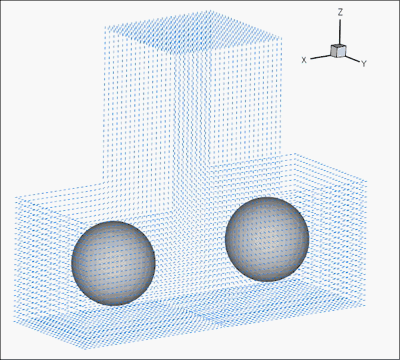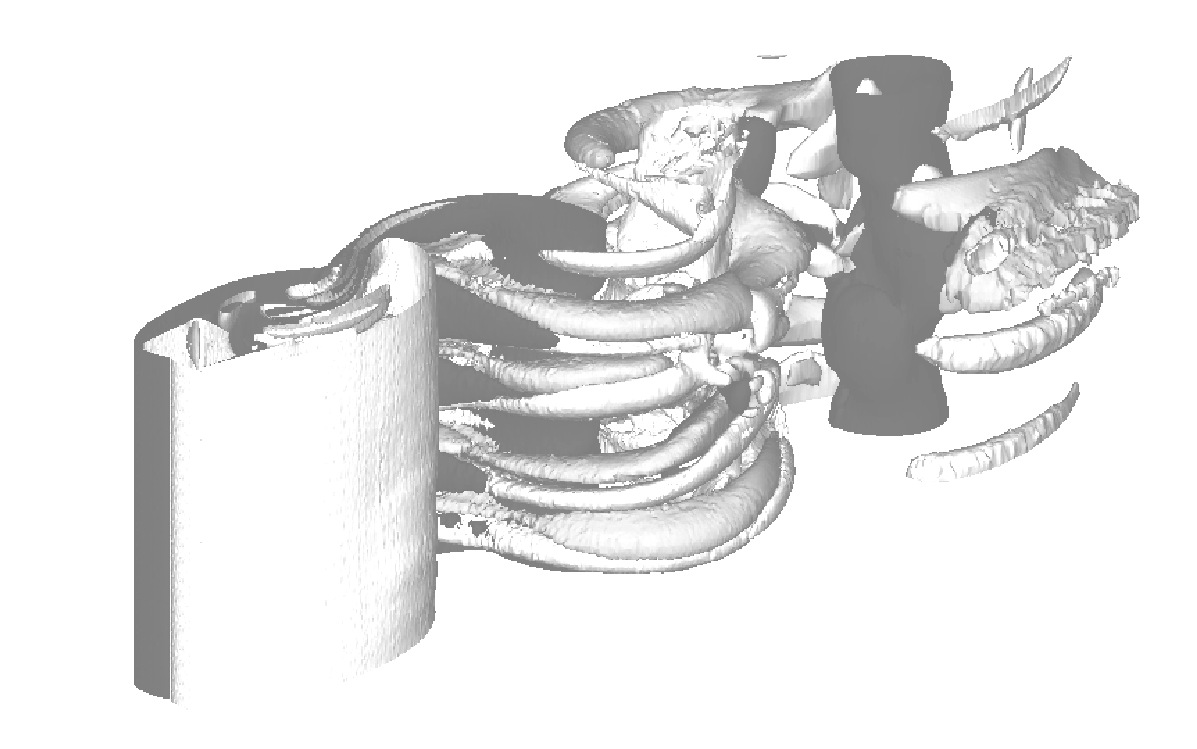Interface problems and complex fluids
Participants: Angelo Iollo, Charles-Henri Bruneau, Thierry Colin, Mathieu Colin, Kévin Santugini.
By a complex fluid, we mean a fluid containing some
mesoscopic objects, i.e. structures whose size is
intermediate between the microscopic size and the
macroscopic size of the experiment. The aim is to study
complex fluids containing surfactants in large quantities.
It modifies the viscosity properties of the fluids and
surface-tension phenomena can become predominant.
Microfluidics is the study of fluids in very small
quantities, in micro-channels (a micro-channel is
typically 1 cm long with a section of 50micro mètres * 50
micro mètres). They are many advantages of using such
channels. First, one needs only a small quantity of liquid
to analyze the phenomena. Furthermore, very stable flows
and quite unusual regimes may be observed, which enables
to perfom more accurate measurements. The idea is to
couple numerical simulations with experiments to
understand the phenomena, to predict the flows and compute
some quantities like viscosity coefficients for example.
Flows in micro-channels are often at low Reynolds numbers.
The hydrodynamical part is therefore stable. However, the
main problem is to produce real 3D simulations covering a
large range of situations. For example we want to describe
diphasic flows with surface tension and sometimes surface
viscosity. Surface tension enforces the stability of the
flow. The size of the channel implies that one can observe
some very stable phenomena. For example, using a "T"
junction, a very stable interface between two fluids can
be observed. In a cross junction, one can also have
formation of droplets that travel along the channel. Some
numerical difficulties arise from the surface tension
term. With an explicit discretization of this term, a
restrictive stability condition appears for very slow
flows. Our partner is the LOF, a Rhodia-Bordeaux 1-CNRS
laboratory. One of the main points is the wetting
phenomena at the boundary. Note that the boundary
conditions are fundamental for the description of the flow
since the channels are very shallow. The wetting
properties cannot be neglected at all. Indeed, for the
case of a two non-miscible fluids system, if one considers
no-slip boundary conditions, then since the interface is
driven by the velocity of the fluids, it shall not move on
the boundary. The experiments shows that this is not true:
the interface is moving and in fact all the dynamics start
from the boundary and then propagate in the whole volume
of fluids. Even with low Reynolds numbers, the wetting
effects can induce instabilities and are responsible of
hardly predictable flows. Moreover, the fluids that are
used are often visco-elastic and exhibit "unusual" slip
length. Therefore, we cannot use standard numerical codes
and have to adapt the usual numerical methods to our case
to take into account the specificities of our situations.
Moreover, we want to obtain reliable models and
simulations that can be as simple as possible and that can
be used by our collaborators. As a summary, the main
specific points of the physics are: the multifluid
simulations at low Reynolds number, the wetting problems
and the surface tension that are crucial, the 3D
characteristic of the flows, the boundary conditions that
are fundamental due to the size of the channels. We need
to handle complex fluids. Our collaborators in this lab
are J.-B. Salmon, P. Guillot, A. Colin. An ANR project in
the SYSCOM program has been obtained in 2008 concerning
the study of complex fluids in microfluidics. The
evolution of non-newtonian flows in webs of micro-channels
are therefore useful to understand the mixing of oil,
water and polymer for enhanced oil recovery for example.
Complex fluids arising in cosmetics are also of interest.
We also need to handle mixing processes.

Collison.

